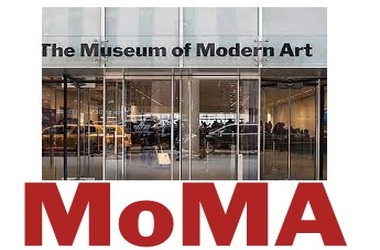
The Museum of Modern Art (MoMA) has recently unveiled an innovative project that combines traditional art with groundbreaking blockchain technology. Known as the MoMA Postcard project, this endeavor aims to promote collaborative creativity and provide a platform for artists and enthusiasts to explore Non-Fungible Tokens (NFTs) and blockchain in an accessible and innovative way.
Presented in partnership with Autonomy Wallet, the MoMA Postcard project features a collection of 15 co-created postcards. Each postcard represents a unique destination and is the result of collaboration between 15 artists. The project can be explored on Objkt.com, where participants can also learn how to participate, design, and share their own postcards by visiting moma.org/postcard.
The participating artists include notable names such as @GrantYun2, @petereburr, @ykxotkx, and @dmitricherniak, among others. These artists provided prompts that guided the creation of their respective postcards. For example, @dmitricherniak prompted participants to design a goose avatar in the theme of “Mango-Grayscale-Dada,” while @GrantYun2 encouraged embracing nature with “Hazel-Gradient-Symmetry.”
Described as an “experiment in collective creativity on blockchain,” the MoMA Postcard project takes inspiration from the concept of a digital chain letter. Each postcard transitions from one destination to another, with 15 blank stamps on each card awaiting designs by co-creators. As these postcards travel across the globe, they become captivating blockchain journeys.
The core objective of the project is to provide a platform for individuals to explore NFTs and blockchain technology in a unique and accessible way. By combining art and technology, MoMA aims to inspire connections and conversations within the digital art world. As a renowned institution, MoMA’s participation in this initiative represents a significant step forward in the exploration of NFTs and blockchain within the art community.
The creation process of the MoMA Postcard project involved inviting 15 artists who specialize in the intersection of art and technology to craft their sets of unique cards. Beginning with a blank card, each artist introduced a prompt, and these cards circulated among all participants. As they traveled globally, each card evolved based on its prompt and collected unique stamps. These stamps, once verified on the blockchain, represented ownership of the card. The result is a collection of cards that are co-created and co-owned simultaneously.
The global nature of the MoMA Postcard project is evident in its reach. Spanning 35 cities, across 11 countries and 5 continents, this project serves as a testament to boundary-less collaborative creativity. Every aspect of the project, from the artists’ prompts to the unique stamps, contributes to the collective whole, emphasizing the global connections fostered by this artistic endeavor.
In conclusion, the MoMA Postcard project is an extraordinary fusion of art and blockchain technology. It showcases the potential for collaborative creativity in the digital age and highlights the exploration of NFTs and blockchain within the art world. With renowned artists participating and the utilization of blockchain’s immutable ledger, this initiative represents a significant step forward in uniting artists and enthusiasts from diverse backgrounds and fostering a truly global artistic community.






